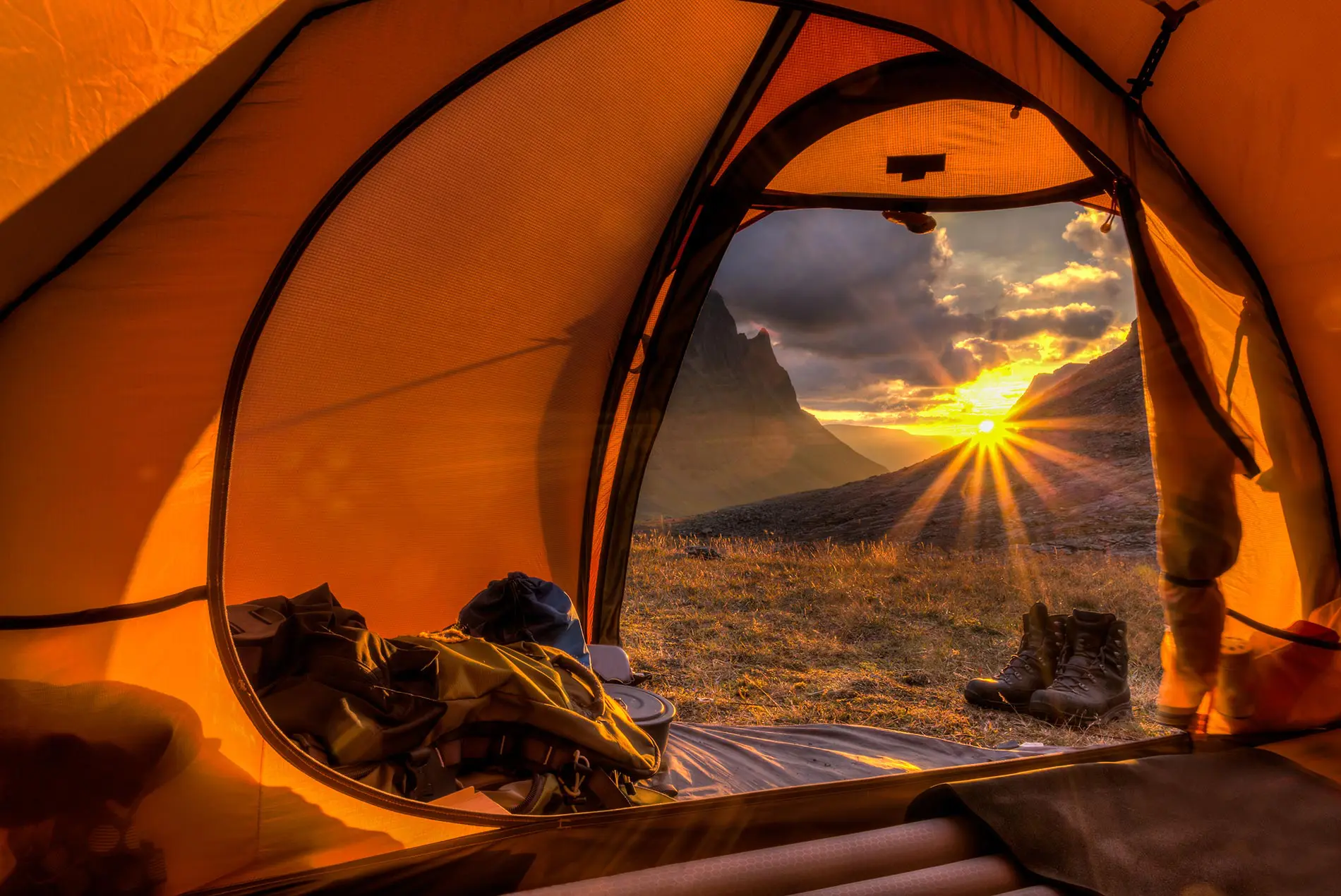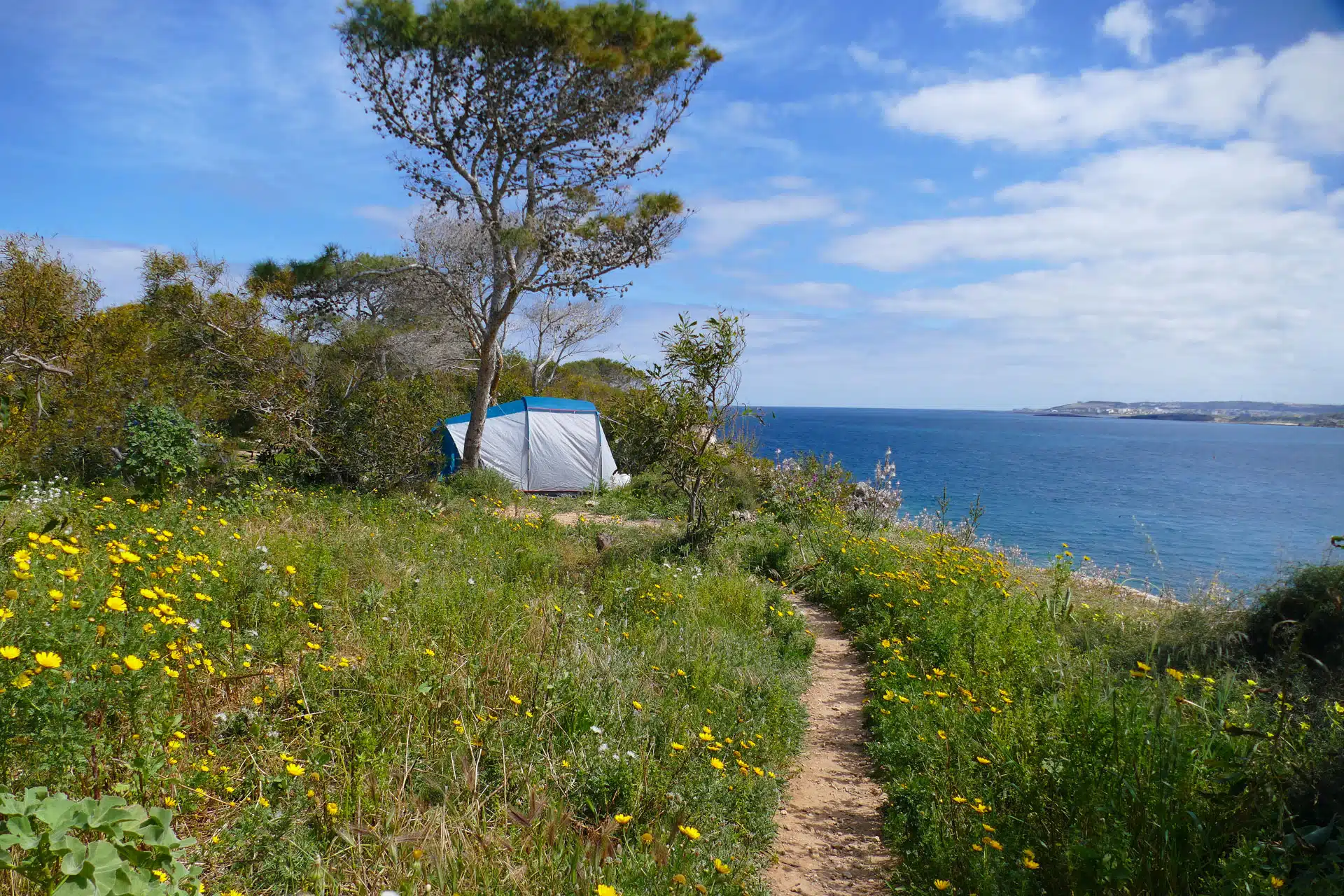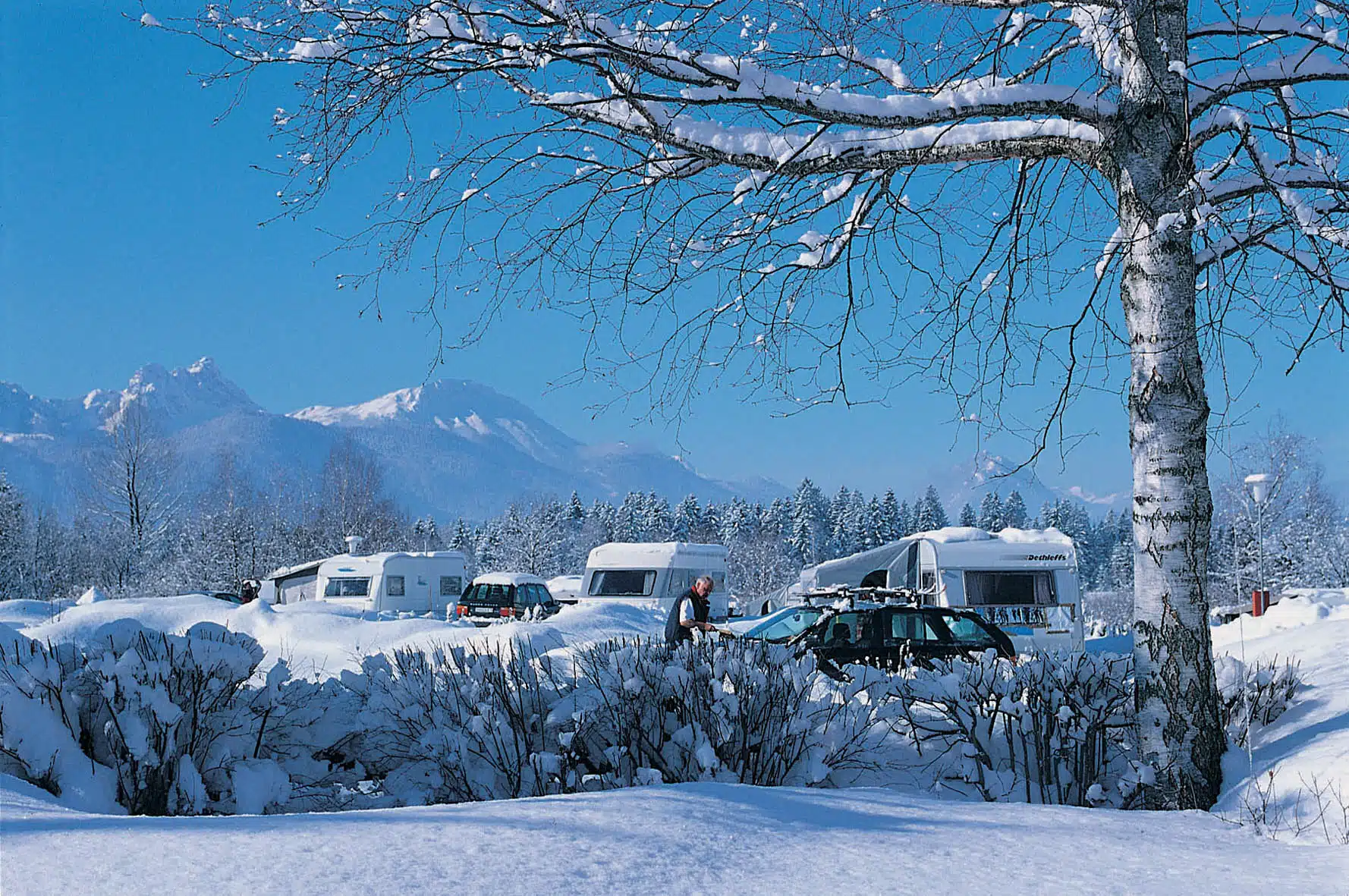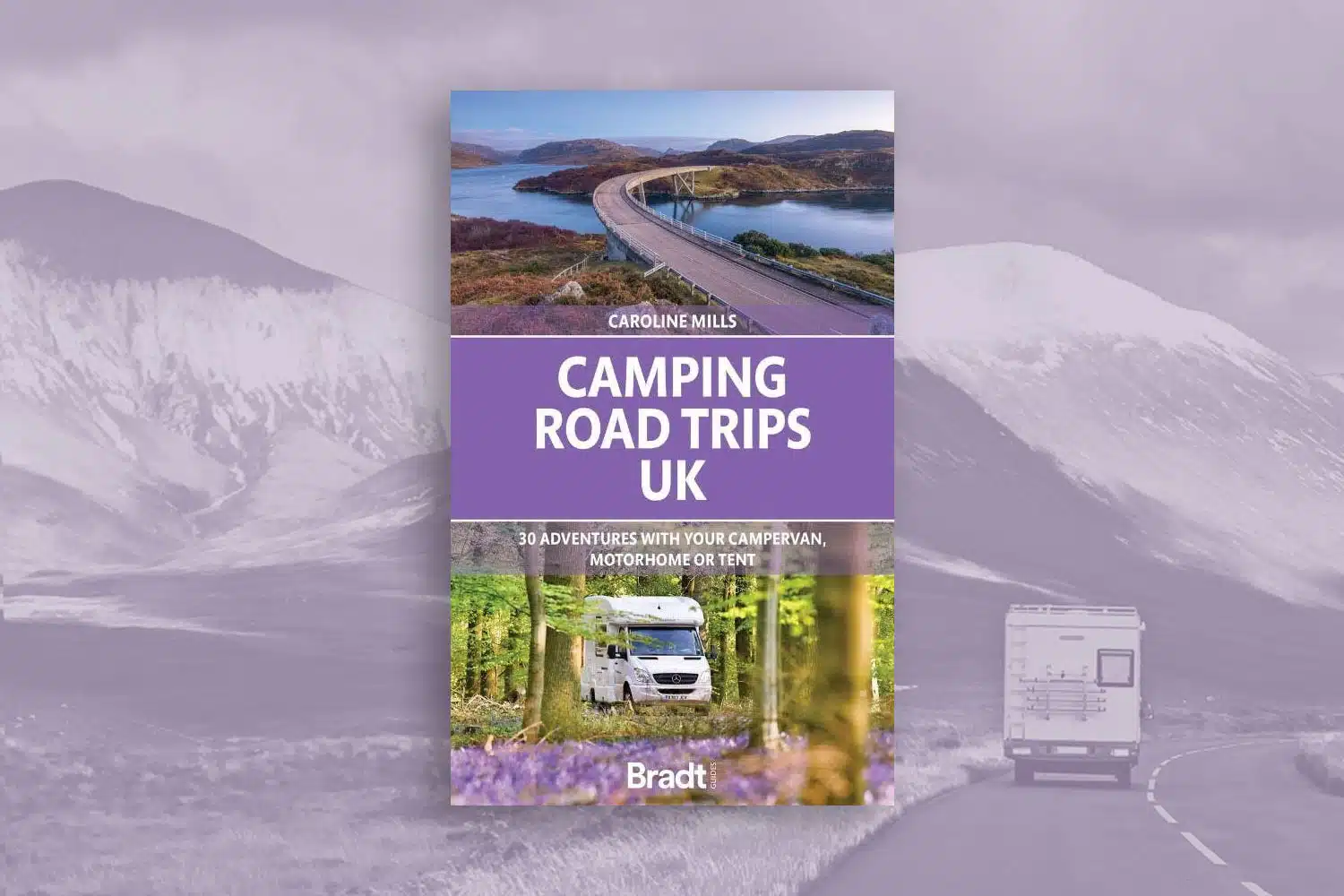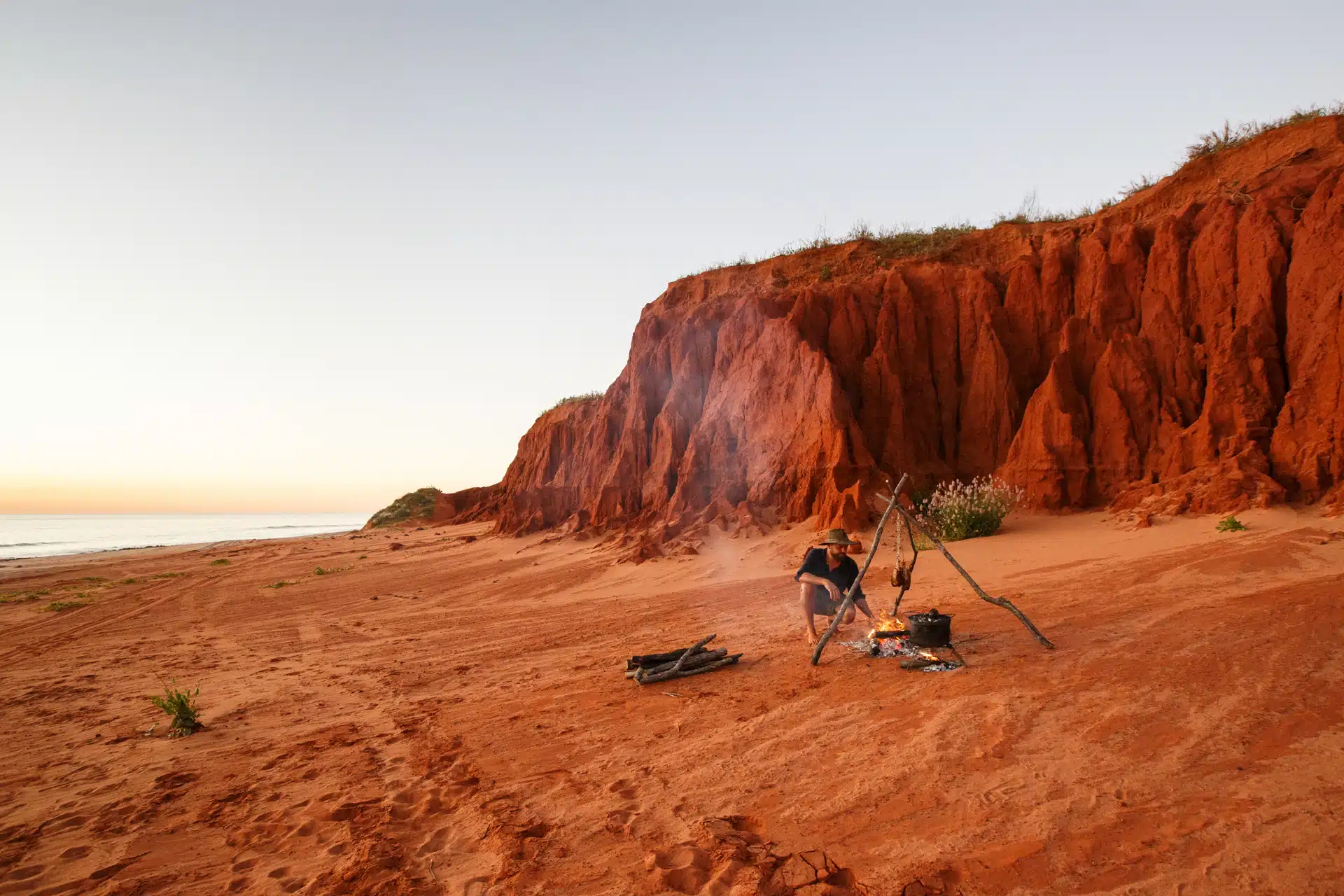Touring Magazine brings you the ultimate guide to buying a tent for a perfect adventure under the stars
So, here is your broken down, comprehensive, tent-whizz guide to knowing exactly what to consider when buying a tent to take that trip to the Himalayas, the beach or your neighbour’s garden.
For more reviews, practical advice and travel inspiration subscribe to Touring magazine for free!
First things first..
Tent Size
How many people do you want your tent to be able to sleep? This is capacity, or berth, plus the main living area.
As a general rule, if you have a lot of kit, hiking gear, cooking equipment, children’s toys or happen to sleep in a starfish position, then buying a tent that accommodates one person more than your camping party is a good idea. This way you will have ample room for all your extras and still get a good night’s sleep. Saying this, the bigger the tent is the more space it will take up when it’s all packed away.

If you’re planning on squeezing a ten-man tent into the car at the last minute, think again. A two-man tent can just about be squished into the footwell of a car but anything bigger will have to have some forward packing planning.
When it comes to bedrooms, larger tents generally have separate sleeping compartments which face into a communal area. Some have compartments that can be entirely zipped off making it ideal for a trip with six, four or even two people depending on which sections you take.
Anatomy Of A Tent
Now, let’s get to grips with the basics of the tent. There are nine basic components to any tent:
Inner Tent, Outer Tent, Groundsheet, Porch and Doors, Air Vents, Zips, Tent Poles, Guy Ropes, Tent Pegs
Inner tent

The inner tent is designed to make you feel as comfortable as possible. Whether the bedrooms are separated from the porch or communal area or if everything is loaded in together, the inner tent is designed to keep condensation to a minimum and privacy to a maximum.
The inner tent is often made from Polyamide or polyester mesh fabric. You can get a range of density according to the climate you plan on camping out in, the thinner and airier for the warmer temperatures and thicker density for the colder climates.
Best of all, when it comes to an inner tent, almost all of them have a storm lantern loop at the top in the centre to allow for those late-night card games.
Outer Tent
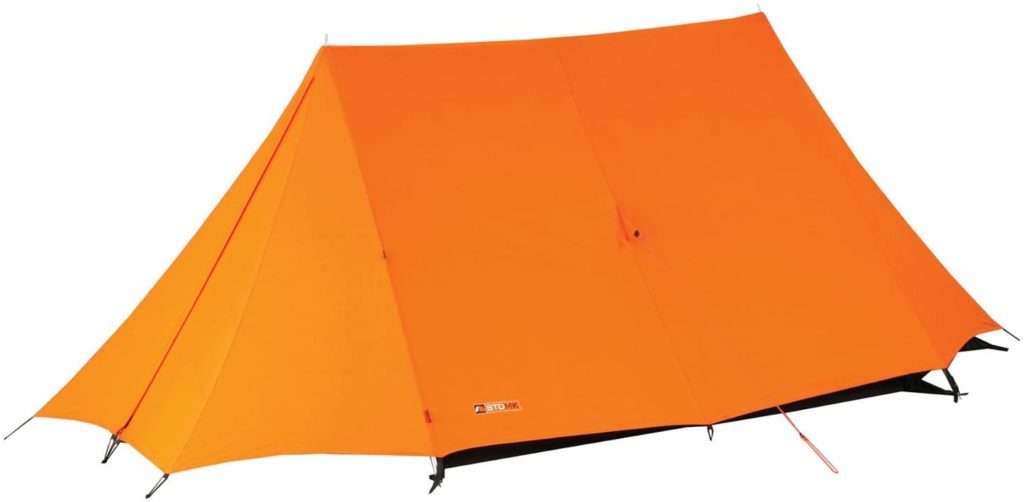
Not only is the outer tent your wind and rain protection, but there are a few other things to consider.
There are two types of tent, a Double Skin and a Single Skin. A Double Skin tent has both an inner and an outer tent, the outer designed to stop the inner from getting wet. This type of tent provides better insulation and condensation protection than a Single Skin tent, but with this comes the added weight of another layer of tent. A Single Skin tent has just one layer of tent which is made from waterproof material. Clearly more lightweight and often a lot cheaper, it also provides less insulation particularly if it gets wet.
Keeping up?
There’s more!
Hydrostatic head rating, HH, is your waterproofing. So how dry do you want to stay when you’re battening the hatches against the great British weather?
The range of HH waterproofness is from 1000mm to 10,000mm, the higher the rating the more waterproofing you get. Some people even choose sealed seams for their tent for even more water protection, but this is only necessary for extreme camping.
There are a few different materials and coatings an outer tent can be made from so if you’re in the business for some technical stuff, here goes:
Material
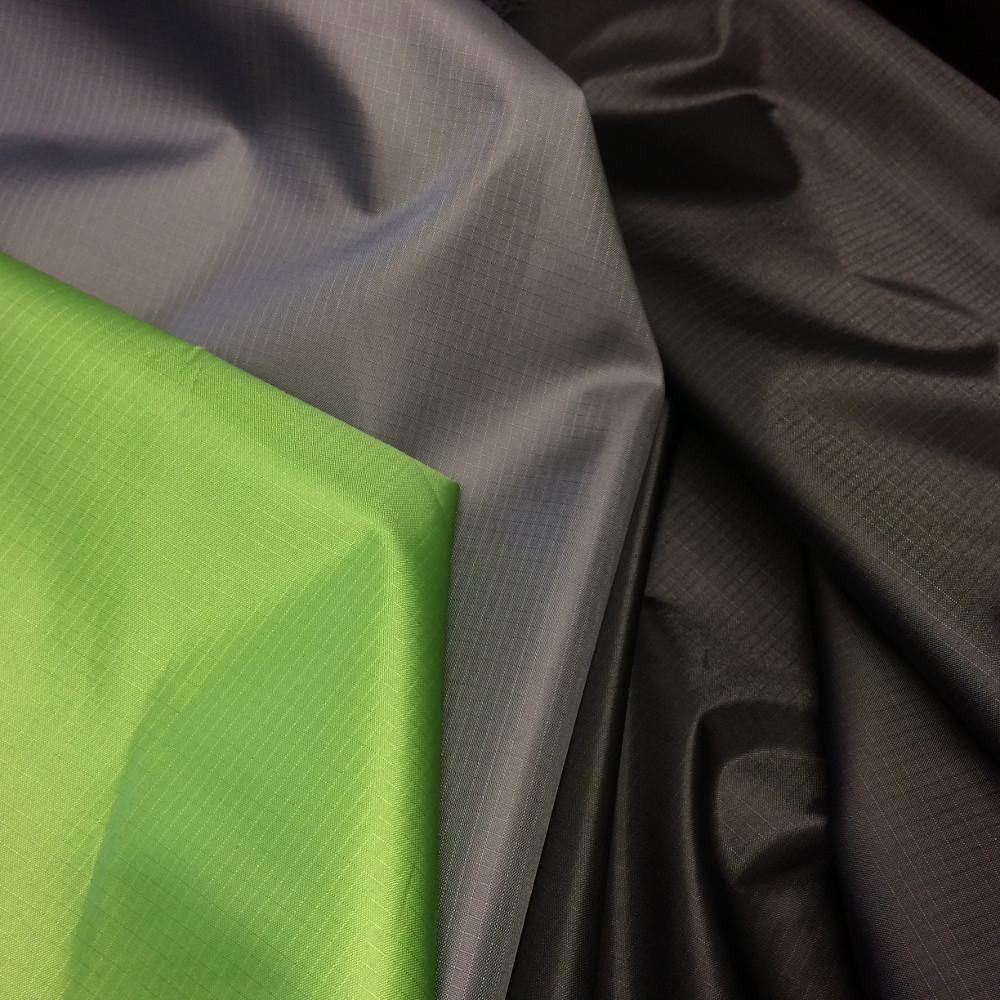
Nylon: Strong, waterproof and just the right amount of elasticity. It’s naturally tough but light enough to be used if you want to pack it in a backpack. As it’s so light, it is not the warmest or most structurally sound if the wind gets up, but invest in a nylon tent with good guy ropes and you will be laughing.
Polyester: This has low absorbency, quick drying abilities, high durability and is resistant to deformity if you haven’t quite got the packing away down to a tee just yet. It used most commonly in larger tents because it is a little heavier than nylon.
Canvas: Strong and can withstand most weather. With good insulation it suits both warm and cool weather, including the added extra of UV protection. This is heavy so a bit of muscle may be needed if you’re thinking in investing in a large canvas tent. It is fairly absorbent so dry storage is essential.
Polycotton: Expensive, but you get what you pay for. As a blend of polyester and cotton, the qualities of the two materials are balanced to make it suitable for all types of climate. Polyester’s lack of breathability and insulation is overridden by cotton’s good breathability and insulation. The material is durable and can stand up to the wind without getting draughty and you’ll have no problem in the sun as the cotton allows for UV protection too. This said, the cotton element in polycotton does add more weight to bear in mind if you’re going anywhere you can’t reach by car.
Coating
Polyurethane (PU) Coating: Waterproof and breathable. It doesn’t cost the moon but is heavier so the overall tent can be bulky. If it gets completely sodden it can take some time to completely dry, this makes it more susceptible to mould and mildew if it is packed away too soon. Cool, dark, dry storage is imperative for the life of this coating.
Silicone and PU coating: Silicone coating on the outside allows water to bead off and provides extra tear resistance, while polyurethane on the inside keeps the tent cool and condensation free. If the tent is not kept in a good condition the two coatings can peel away from each other and therefore, alas, waterproofness will be no more.
Silicone and silicone coating: A silicone coating can be applied to both the inside and outside of a tent. Rain will simply roll off, it has excellent tear resistance and UV protection. As silicone is so water repellent this coating requires the inner tent to be aired out during the day to stop condensation building up inside. It is a heavy coating so the water resistance can usually only be measured up to 1500mm, but this still makes a leak free dry tent. This is one of the least absorbent of the tent coatings and exceptional when it comes to mould resistance.
Polyether Urethane (PE): This is used in tents made for harsh environments where durability is most important. It’s heavy, robust and extremely mould resistant. This coating is what you want if you’re in it for the seriously long-haul, think family heirloom but in the form of a tent.
Lastly, the overall weather durability of a tent is measured in ‘Seasons’ ranging from 1 to 4.
1: Essentially a tent most suited for the beach with little or no waterproofing, more like a windshield, changing room or kids nap area.
2: A little more wind and rain protection. Most people would use this kind of tent for a festival or if you are mild climate camping.
3: This would be the most commonly seen tent. It has good wind protection and waterproofing. You can have a happy holiday with no leakages in one of these.
4: For the more extreme camping where weather can be unpredictable, or if you plan on taking a trip in winter.
Groundsheet
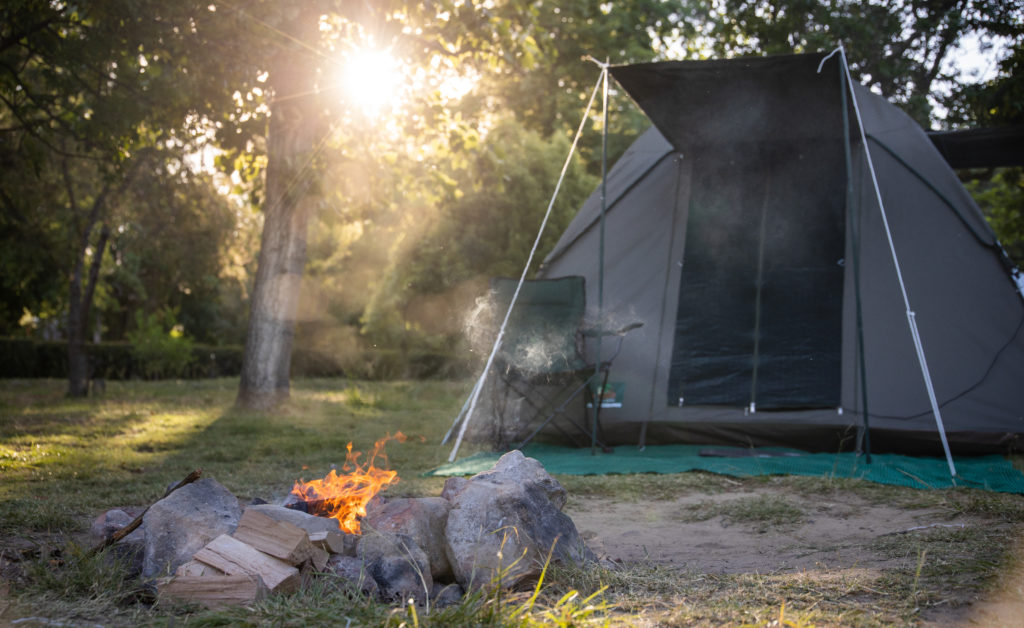
Your protection layer from the ground, no kidding. You need it to be durable as no one wants a bed of rocks and to have a good HH waterproof rating of around 3000mm or above. You can get separate groundsheets or sewn in ones, SIGs. The choice is yours.
Separate groundsheets work well if you have a few tents very close to each other as you can create a communal space still with some protection from the moisture in the ground.
These types you can take up during the day to let the ground breathe and avoid making yellow patches in the grass.
SIGs are great for warmth, the chances of an unwanted draught are far lower and it will keep the bugs out too. The majority of tents have SIGs with the option of purchasing an extra, separate groundsheet if you are going anywhere unusually wet.
Always check to see what the groundsheet looks like at the tent doorway. If it pins down flat then you will have no problem, but if it looks like a high lip you have to ask yourself if the ‘bathtub’ style of groundsheet is worth the trip hazard. If your camping trip is anywhere like Snowdonia then it will be worth the trip hazard, no one wants to float away having already been soaked through with torrential rain. If it is just your back garden then it might be worth having a bit more of a shop around to avoid flying headfirst into your perfectly plush pillows.
You can also get a tent footprint which protects your groundsheet from mud and stones and provides a little extra insulation underneath, if you’re camping in winter this may help reduce frostbitten toes. The same goes for a tent carpet but this is for inside the tent not underneath.
Porch and Doors

Smaller tents will have just enough space to store a couple of pairs of shoes to dry outside the main bedroom compartment, or some extra kit you don’t necessarily want inside, this is often referred to as a tent vestibule. With larger tents the porch can give enough space for what could essentially be a kitchen/diner as it often blends into the main communal space between bedrooms, this also means you can store a large amount of kit inside and still have room to move. With a large tent you have the option of a porch at the front of the tent, or at the side with bedrooms either side.
Regardless of the size of tent you go for many tents have two layers to the door which allows you to have the door open for air flow but again, the bugs are kept out.
If you are camping with a lot of people and need to extra space you can get separate porches, or a canopy if you don’t need protection from the sides.
Air Vents and Condensation Regulation
Almost all tents have air ventilation systems built in. Doors and windows (yes, tents have windows now, some even have tinted windows if you’re going really high spec) do provide the obvious air flow.
If you have wet kit, clothes, or freshly washed up pots and pans, these will all add to an increase in condensation. The most important thing to do is make the most of the air vents which are already built into the body of the tent. They often look like small triangles in the walls, some are built well enough to pinch from the outside to form a pyramid shape, with mosquito mesh on the inside but allowing constant air flow.
Zips
The difference between a good zip and a bad zip can stop you getting ‘locked out’ of your tent altogether. Almost all tents have double tabbed zips so you can open the door from both the top and the bottom, inside and out. The material of your tent will depend on the weight of the zip. A nylon tent will have a considerably lighter zip than a tent made from canvas. The same goes for the season of the tent. A season 4 tent will have a stronger, more durable zip than a season 1 tent.
There are two styles of zip, a coil and a tooth:
Coil Zip: Also known as a ‘Spiral Zip’ is the more flexible of the two. It is used on curved doorways, but go carefully as this can give you trouble if you try to yank it open too quickly, getting stuck in the meantime.
Tooth Zip: Also known as the ‘Chunky Zip.’ Heavy duty and far better running in straight lines than for a curved doorway. The teeth of the zip are moulded directly onto the tape so again, go carefully with this zip as if you break one of the teeth the entire zip will need replacing. This is the tougher of the two.
Buying a quality tent that will last years and is worth repairing in case of damage is a good idea. You can buy replacement zips for your tent or have repairs done should you need to.
Tent Poles
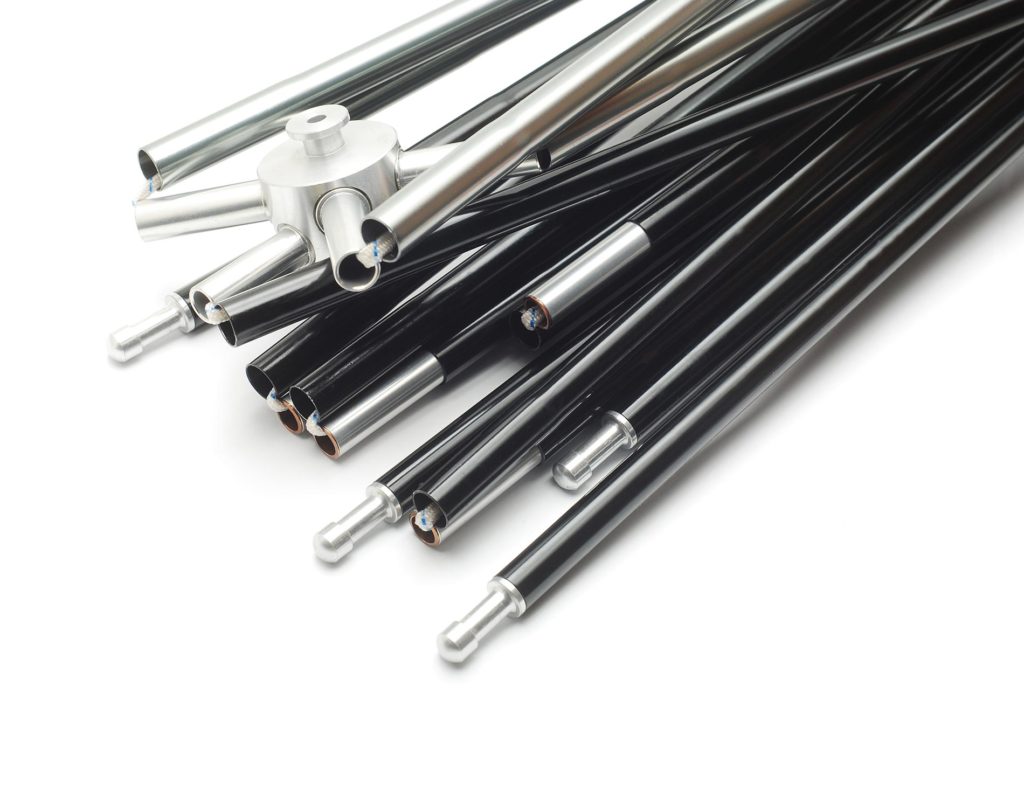
The structure of the tent relies on the poles, and there are a few you can choose from. Not only do you consider what material the poles will be made from, but also whether they are snap in, linked with elasticated cord or inflatable, yes, inflatable.
Snap-In, Knuckle Jointed: By far the easiest way to pitch a tent. Incredibly fast to set up and you will never have a problem with having lost a pole as these come ready sewn in with just a few knuckles to ‘snap in’ before you have a beautifully pitched tent. This does mean the whole tent comes down as one so there will be no sharing out of the poles if you plan on hiking to your next pitch. One person has it all and one person, lucky them, has nothing.
Bendy Poles: These are your classic tent poles linked with elasticated cord inside to get the correct length pole for your tent. It takes a knack to get them back together again without pinching any of the tent material if they come apart when you’re threading them through the seams. As the poles are completely removable the total space the tent takes up as luggage is considerably small, a tent can be easily shared out between two or three backpacks.
Air Tubes: An alternative to traditional poles, but surprisingly heavy considering the lack of poles. Tents in this style have heavy duty tubes and will often come with a pump to allow you to pump them up to the correct PSI for good rigidity.
After deciding the style of pole, look at what they are made from:
Fibreglass: The most common and easiest to repair or replace.
Steel: Stronger, but weigh a little more and are harder to repair.
Alloy: Light, strong and easily repairable. You pay a price for getting all three in one.
Guy Ropes
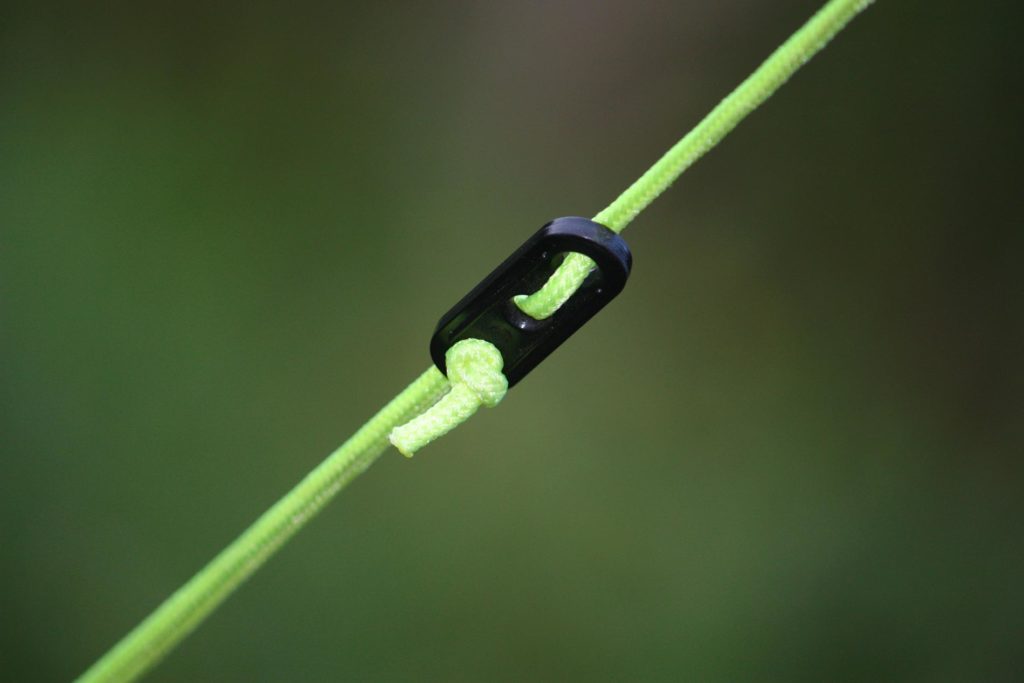
These will stop your tent from flying away. A constant trip hazard, but we put up with that to still have a tent at the end of the day, or night. Guy ropes can be reflective so if you have the choice between two tents and the only difference is one has reflective guys and the other doesn’t, choose reflective. You will be thankful when you don’t fall head over heels multiple times a day.
Guy ropes are made from synthetic cord and are attached to the flysheet to distribute stress from the poles and stabilise the tent. The guy ropes generally follow the seams of the tent and are adjustable so you don’t have to peg them in on the only stone around. Guy ropes follow the direction of the seam and any attached to flaps should be pulled straight out, this will minimalise the risk of the inner and outer tents touching.
Tent Pegs
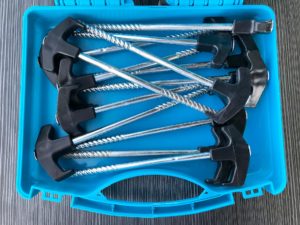
Normally, the harder your pitch site is, the thinner the peg you should be using. For really hard ground you need thin needle looking ones and for snow you can get pegs that look like mini snow shovels. The standard pegs you get when you buy a tent are suitable enough for your normal camping trip.
Usually you get a combination of both the small round steel pegs for pegging ground sheets and V shaped pegs which make good allrounders for the main guy ropes.
T-shaped pegs are heavy duty and will not spin if you need to pitch in mud or exceptionally high winds, and X pegs are most suitable for sandy conditions. After this you have to get to grips with kit for more extreme camping such as Screw Pegs for rocks, Half-Round U Pegs for maximum resistance in ground unknown below the surface, or the Delta Peg also known as the ‘Ground Anchor’ which quite literally anchors your tent on the ground in extreme weather.
Pegs are made in both plastic and metal. Plastic pegs are cheaper, lighter and come a little thicker than metal ones. Metal pegs come in Alloy and Titanium. Alloys are light and cheaper than titanium, but if you don’t get the angle right when you bash them in, they are prone to bending. Titanium is stronger and extremely light, but pricey.
Most importantly, invest in a peg puller. This will save you hours of trying to pull out pegs that are too well pegged in, or leaving them behind altogether and having to buy more.
“You’d be surprised how important any of this might be if you’re in the market for a tent to take hiking through the Scottish Highlands, mid-winter!”
What type of tent do you really want and need?
Dome, Pod Tent
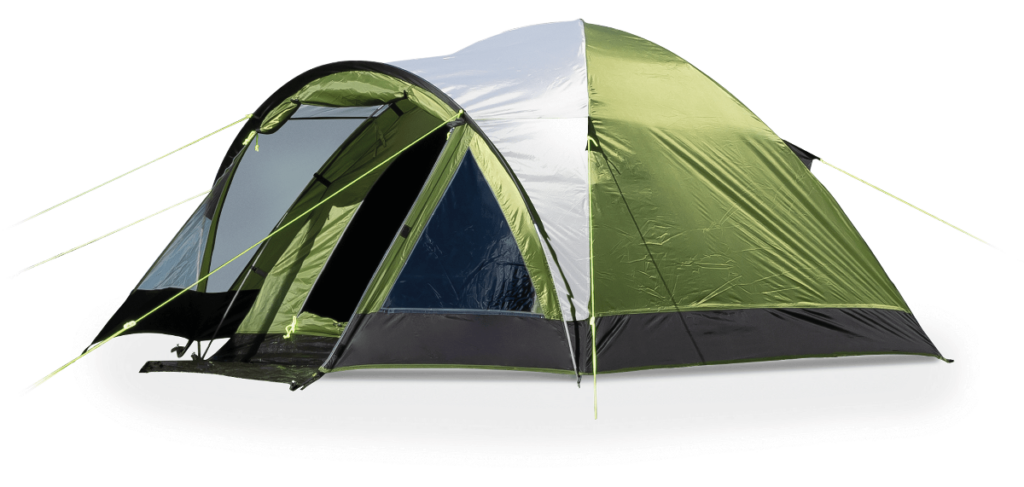
With a symmetrical shape these tents are fairly easy to pitch. On the tent pitching stress scale let’s say you’ll still be speaking to whoever you’re camping with once you’ve finished the set up.
Generally, the bigger you go, the less stable it will be. The pole set up crosses over at the top in the middle creating this necessary stability. With a good amount of headroom in the centre of the tent, internal space can often seem larger than expected due to the sides going up almost vertically from the ground. There is the option for multiple doors and detachable bedrooms (pods) on the large capacity tents. Obviously, the bigger you go, the heavier it will get.
Ridge, Frame, Triangular Tent
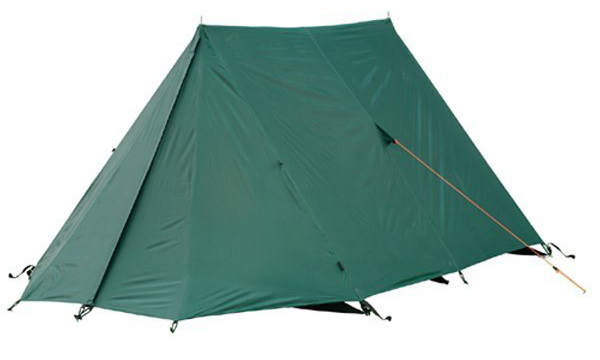
If you’re considering a classic when buying a tent (think “kids drawing” and you’ll know the one), then think about what kit you want to be cosying up to in the middle of the night, as these are not the roomiest.
These tents have great stability in harsh weather and often have a porch on both ends for the kit you won’t be taking inside with you. Quick and simple to pitch, but lacking in head height, this style is great for expeditions, but not so ideal if you’re bringing the whole family.
Geodesic and Semi-Geodesic Tent
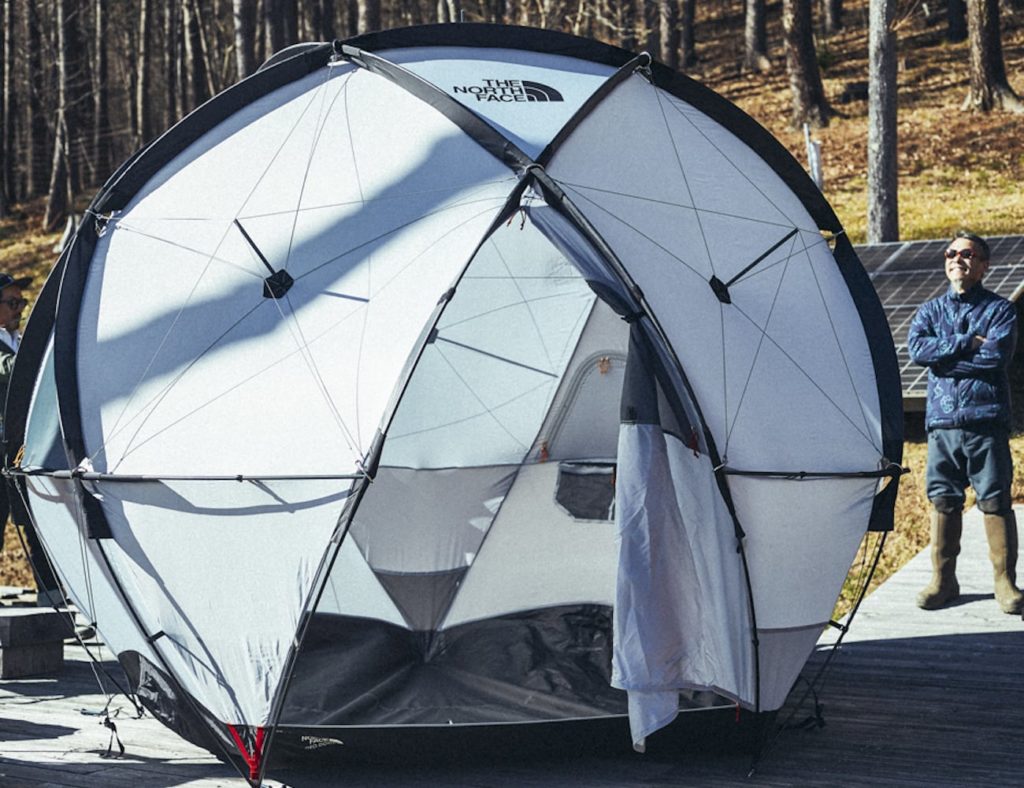
Made with multiple tent poles forming triangles to create a free-standing shape which, when pegged down, stands up well to severe wind, rain and snow.
They often have more than one entrance so in case of bad weather you can still access your tent without your kit getting soaked. The number of poles mean the weight can be on the heavier side, but assess weather patterns to decide if the extra weight is worth it.
If you’re going into the complete unknown, this tent will be your best accompaniment.
With the same basic principle as a Geodesic, but pitched sloping downwards at the back, Semi-Geodesic tents have fewer poles for use in less extreme weather. Very lightweight and quick to pitch, an excellent tent to carry with you on an expedition into the mildly lesser unknown.
Tunnel, Cabin Tent
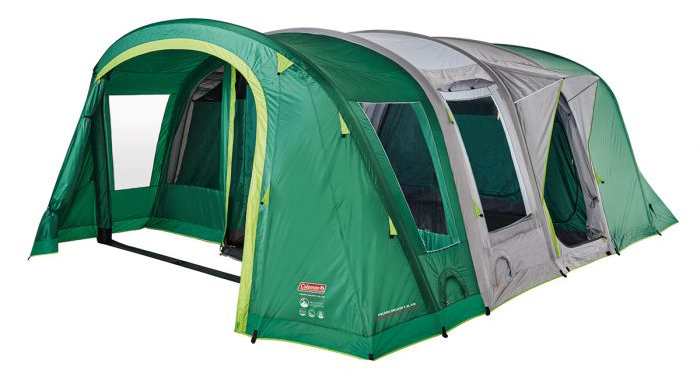
The stability comes from the guy lines so make sure you spend the time putting this tent up and checking its security. Due to the small number of poles it has, usually just three, they can be extremely light. Once pitched it has high and consistent headroom, a communal porch or living area and separate compartments for bedrooms or kit storage areas. You can have the communal area at the front, back or middle and with that you can decide whether you have one or two doors, with some essentially making a walk-through space between the bedrooms, known as a Vis-à-vis tent.
Tunnel tents are are one of the most common family tents you will see on a campsite today so well worth considering when buying a tent if that’s the kind of holiday you will be going on.
Pop-Up, Instant, Quick-Pitch Tent
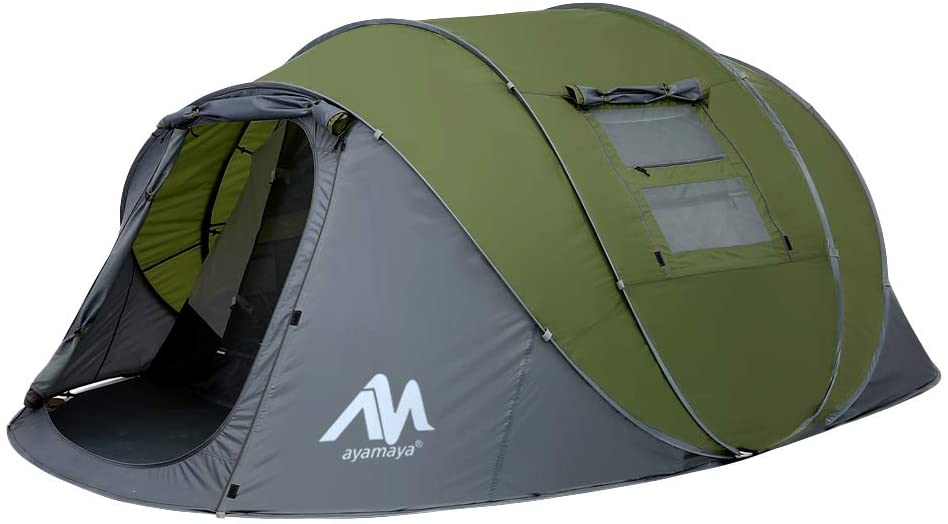
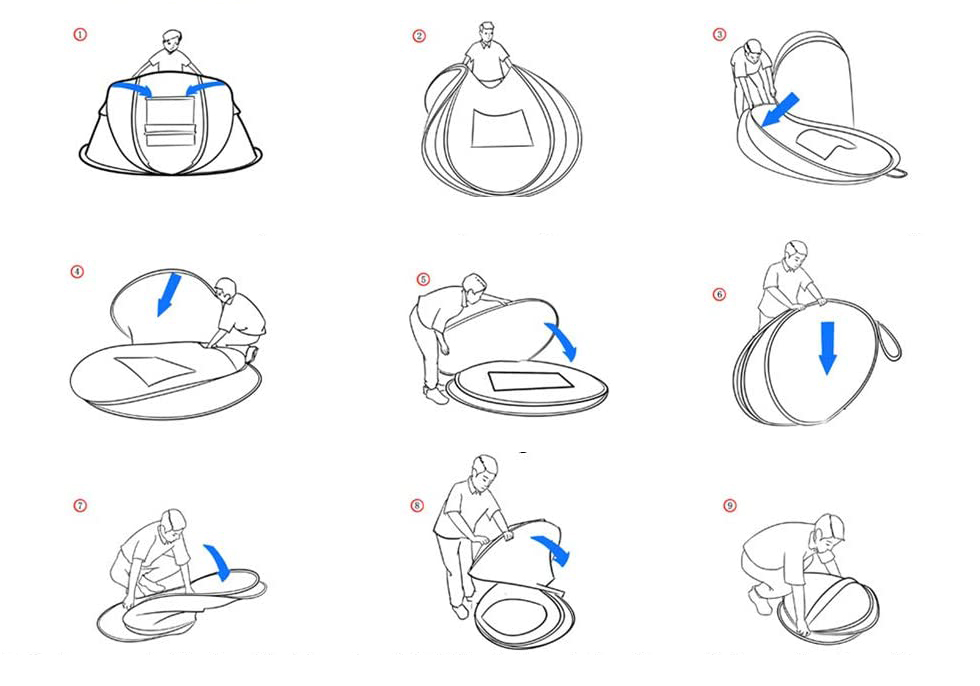
These tents are extremely easy to pitch – simply open up the bag and throw the tent out, providing it isn’t too windy. Then peg out or fill the outside pouches with sand or stones depending on your pitch site. You will see these tents most commonly with children sheltering inside from a sandstorm during a day out at the beach.
What goes up must come down though and squeezing your tent back in its bag is easier said than done. However by practicing in your garden before you set off you will be able to learn the knack.
You can get these for more serious camping and some have the capacity to sleep five people inside. Whether these five people speak to each other after trying to put this tent away after their trip however is another story!
Teepee, Bell Tent
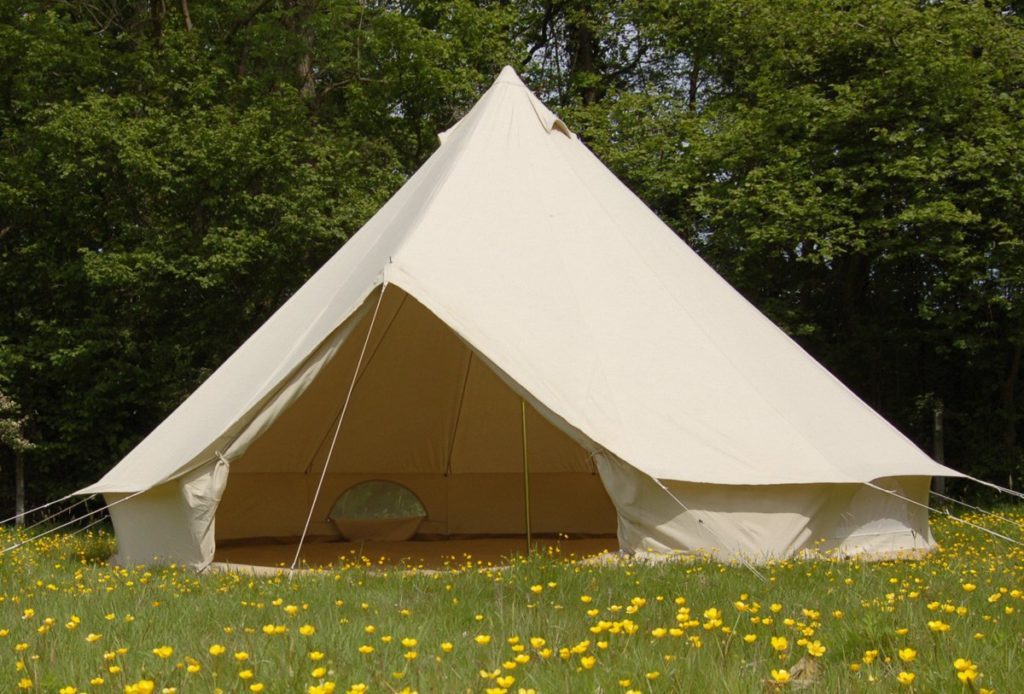
To clear things up, a Bell Tent has a central pole, a Teepee is the classic Native American Wigwam which, if it’s your style, can include a wood burner for warmth.
Bell tents are heavy. Usually made from canvas and sometimes includes wooden poles, you definitely don’t want to have to transport these bad boys any other way than wheels. They are extremely spacious and depending on the weight of the canvas, these can be suited for spring and summer camping. If you go for 100% cotton they can withstand almost anything the weather can throw at you, even in winter.
Transverse Hoop Tent
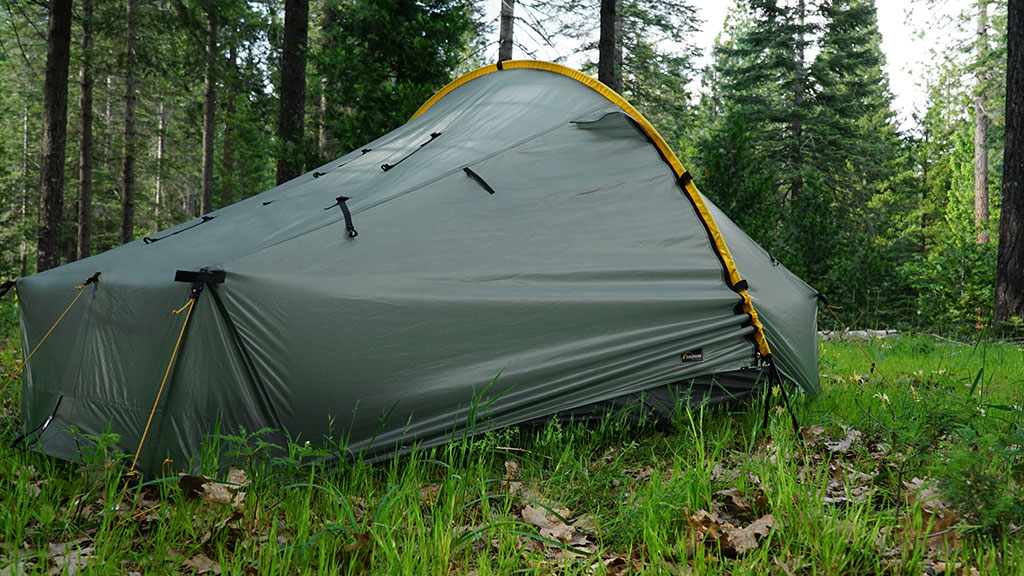
These have just one or two poles to them. I can hear you budding backpackers shrieking in delight, but don’t get too carried away just yet. There’s a price. A price for lightweight, quick to pitch, packs up small, great little tent. Do bring enough pegs though as they need guying out properly so your most valuable piece of kit doesn’t fly away.
Trailer Tent and Folding Camper
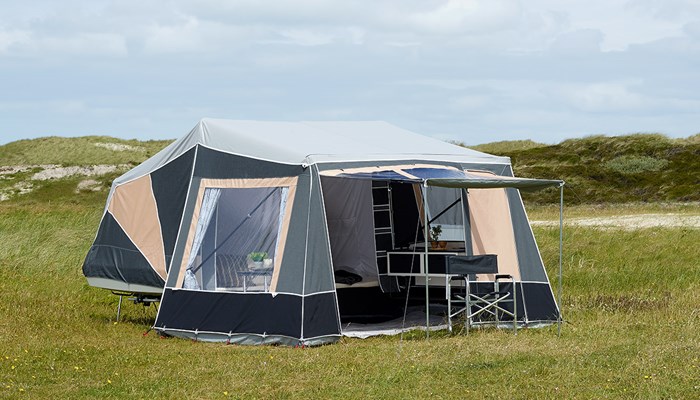
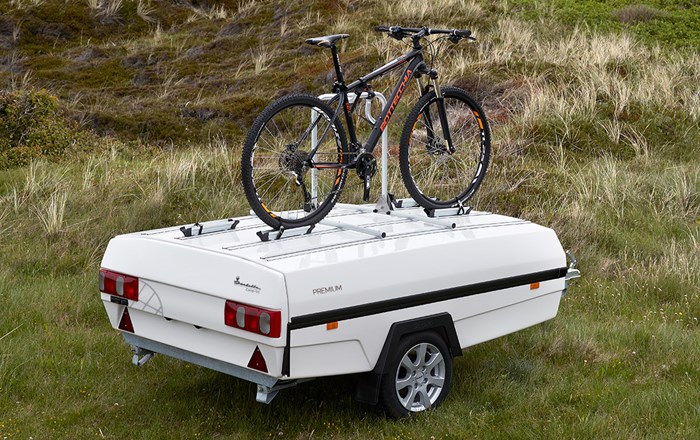
Now this is a whole new kettle of fish to consider when buying a tent. At least one of you will be snagging yourself a bed off the ground.
A trailer tent is towed behind your car (and in some cases even your motorbike!). This means the accommodation is of a pretty high standard, though trailer tents come with a price tag that reflects that.
The general difference between the two is that a folding camper can be used without pegs whereas a trailer tent usually has some aspect of pegging out to be done.
Check out our in-depth look at some of the best trailer tents and folding campers on the market.
Conclusion
As you will have seen there are plenty of things to consider when buying a tent, but if you carefully consider your needs and do your research you will be able to find the perfect tent for you that, with good care, will last for many memory-making camping trips.

